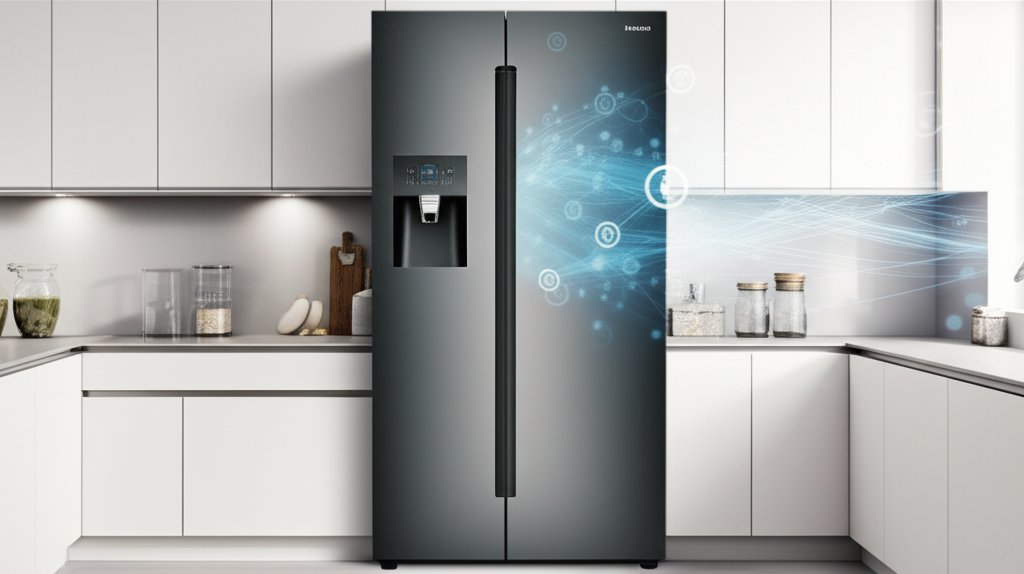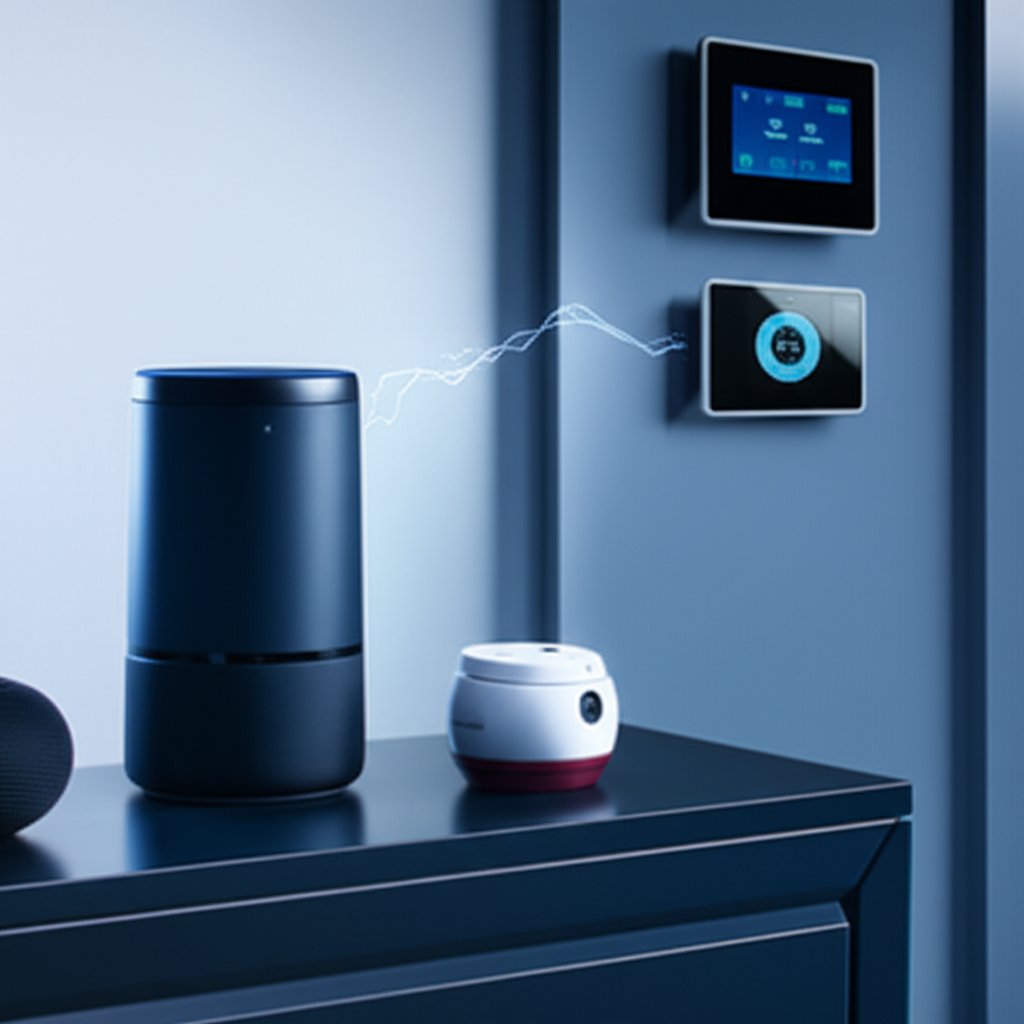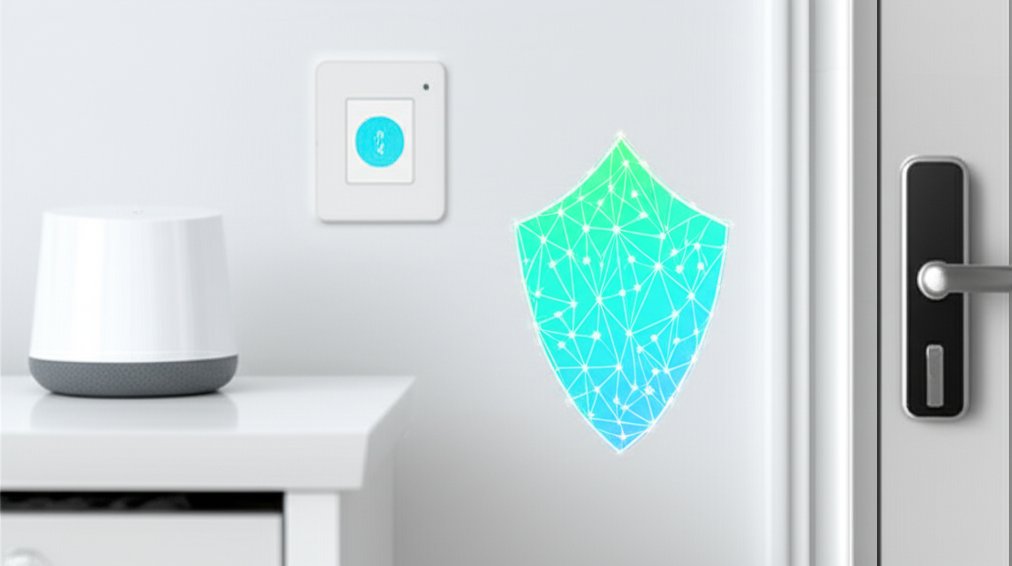Why Your Smart Fridge Needs Security: Unmasking Hidden IoT Vulnerabilities & Simple Fixes for a Safer Smart Home
You juggle a busy life, and your smart fridge, with its ability to order groceries, suggest recipes, and even play music, undoubtedly makes things a little easier. But as a security professional, I often observe a critical oversight: the potential risks lurking within our connected kitchens. Your smart fridge, and indeed your entire home’s Internet of Things (IoT) ecosystem, is more than just a collection of convenient gadgets; it’s a potential gateway for cyber threats. In this article, we’ll unmask these vulnerabilities, explore how a compromised smart fridge could impact your digital life, and empower you with concrete, actionable steps to take control of your digital security and ensure smart appliance security tips are a part of your routine.
More Than Just a Cooler: The Rise of Connected Kitchens
The days when a fridge simply kept your food cold are largely behind us. Modern smart fridges boast impressive features: inventory tracking, shopping list creation, family calendar displays, and even internal cameras for a peek inside without opening the door. This concept of IoT means countless devices around us – from your doorbell to your smart thermostat, and even your smart oven – are now connected to the internet, sharing data and offering unprecedented convenience. It’s truly amazing how technology has transformed our homes.
However, this incredible convenience often comes with a trade-off. Every new connection, every piece of data shared, represents a potential point of weakness. Many of us have welcomed these devices into our homes without fully considering their security implications. It’s time we approached our smart kitchens with the same security mindset we apply to our computers and smartphones, understanding the need for robust IoT device protection guide.
Unmasking the “Smart” in Smart Fridge: A Computer in Disguise
It might look like a regular appliance, but your smart fridge is, at its core, a computer designed for a chilly environment. Think about it: it runs an operating system (often a customized version of Linux or Android), has a processor, memory, and, crucially, a Wi-Fi connection. It’s essentially a large tablet or smartphone built into your kitchen. This inherent computational power and connectivity make it susceptible to many of the same vulnerabilities as your other digital devices. When we talk about Smart home security risks, we often focus on obvious devices like security cameras, but your fridge, quietly humming away, is just as much a part of that network, and potentially just as vulnerable to preventing smart home hacks.
The Hidden Dangers: Common IoT Vulnerabilities in Your Smart Kitchen Appliances
So, what exactly are these weaknesses? It’s not about your ice maker going rogue; it’s about what a compromised fridge or other smart kitchen appliance can do to your wider digital life. Here are some of the most common IoT vulnerabilities we see:
-
Weak or Default Passwords: This is a classic and, sadly, still prevalent issue. Many smart devices, including fridges and even smart ovens, ship with easy-to-guess factory credentials (like “admin/password” or “0000”). If you don’t change these immediately, you’re leaving the digital door wide open. It’s shockingly common and a primary entry point for hackers.
-
Outdated Software and Firmware: Just like your phone or laptop, your smart fridge’s operating system and firmware need regular updates. These updates aren’t just for new features; they often patch critical security flaws. Manufacturers, unfortunately, don’t always provide long-term support, or users simply neglect to install updates, leaving devices vulnerable to known exploits. This negligence is a major factor in issues like ‘smart oven hacking prevention‘ failures or general IoT device compromises.
-
Insecure Network Protocols & Unencrypted Data: When your fridge communicates with the manufacturer’s cloud services, is that conversation private? If the data isn’t properly encrypted, hackers can intercept it, potentially gaining access to your personal information or even your Wi-Fi credentials. It’s like whispering your secrets in a crowded room where anyone can listen.
-
Insecure Default Settings: Many devices come out of the box with unnecessary ports open or services running that can be exploited by malicious actors. These might be useful during manufacturing but pose significant risks for everyday use. It’s often up to us, the users, to meticulously lock them down.
-
Lack of Privacy Protection: Your fridge knows a lot about you: what you eat, when you eat, your family’s routines, and even your voice commands. This vast amount of personal and usage data is often collected without crystal-clear disclosure or robust protection. When we discuss Smart home IoT device security and privacy, this data collection is a huge concern, even without direct hacking.
The Real-World Risks: What Happens When Your Smart Fridge is Hacked?
Okay, so your fridge has vulnerabilities. But what’s the worst that could happen? A lot, actually. The consequences of a compromised smart fridge extend far beyond your pantry.
Imagine this scenario: A hacker scans the internet for vulnerable devices and finds your smart fridge, still using its default password. They gain access, not to steal your last carton of milk, but to silently install malicious software. Now, your fridge isn’t just a fridge; it’s a silent spy. From there, the attacker uses it as a pivot point to scan your home network, identifying your laptop, smartphone, and other Smart home security device. They then exploit a known vulnerability in your router or an unpatched smart camera, gaining full access to your entire digital life.
-
Gateway to Your Home Network: This is arguably the biggest risk. A hacked smart fridge doesn’t just put itself at risk; it becomes an entry point. Once a hacker is in your fridge, they’re often on your Wi-Fi network. From there, they can attempt to access your laptops, phones, smart TVs, and anything else connected, including your securing smart home hubs. It’s a stepping stone to your entire digital life, making it crucial to fortify your home network.
-
Data Theft and Privacy Invasion: Imagine losing your personal information – email addresses, passwords (especially if you’ve reused weak ones), even payment info for grocery orders. A compromised fridge can reveal home occupancy patterns, daily routines, and highly personal food habits. What’s more concerning, some smart fridges have built-in cameras and voice assistants, raising the terrifying possibility of direct spying or recording.
-
Botnet Attacks: This one’s pretty frightening. Your fridge, along with thousands of other unsecured devices, could be recruited into a “botnet” – a network of compromised machines used to launch large-scale cyberattacks, like Distributed Denial of Service (DDoS) attacks. You wouldn’t even know it’s happening, but your fridge could be unwittingly participating in digital crime.
-
Ransomware and Malware Spread: If a hacker gains access, they could introduce malicious software to your network. This could range from ransomware, which locks your files until you pay a ransom, to other types of malware designed to steal information or cause disruption across all your connected devices.
-
Loss of Functionality: At the very least, a hacked device might stop working as intended, becoming an expensive, dumb appliance.
-
Reputational Damage (for small businesses): For small businesses using smart appliances (perhaps in a breakroom), a breach can lead to significant reputational harm, data loss, and even legal consequences.
Simple Steps to Secure Your Smart Fridge (and Your Entire Smart Home)
Feeling a little exposed? Don’t worry; you’re not powerless. As your security guide, I assure you there are very practical, non-technical steps you can take today to significantly bolster your security and protect all your safe smart home devices.
-
Change Default Passwords Immediately: This is a non-negotiable first step. Upon setting up any new smart device, including your fridge, change the default administrator password. Create strong, unique passwords – at least 12-16 characters long, combining uppercase and lowercase letters, numbers, and symbols. If you can, use a reputable password manager to generate and store these complex credentials securely. For even stronger authentication, consider exploring passwordless authentication where available. Never reuse passwords across devices or accounts. This aligns with modern security practices, including principles of Zero-Trust Identity, which emphasize verifying every access attempt.
-
Keep Software and Firmware Updated: Treat your smart fridge like your smartphone. Enable automatic updates if your device offers them. If not, make it a habit to regularly check the manufacturer’s website for new firmware. These updates are crucial for patching known security holes and vulnerabilities. Falling behind on IoT device firmware updates is like leaving a window open for criminals.
-
Isolate Smart Devices on a Separate Network: This is a golden rule for all IoT device protection guide advice. If your home router supports it, set up a guest Wi-Fi network or, even better, a VLAN (Virtual Local Area Network). Connect all your IoT devices, including your smart fridge, to this segregated network. This means if one of your smart devices gets compromised, the attacker is largely contained to that isolated network and cannot easily jump to your primary network where your sensitive data (laptops, phones, financial info) resides. This is effective **smart home network segmentation**, a key principle of Zero Trust.
-
Disable Unused Features: Does your fridge have a camera you never use? A microphone you don’t need? A remote access feature you don’t utilize? Go into your fridge’s settings and turn them off. Less functionality means fewer potential attack vectors for hackers to exploit. Review all default settings and disable anything that isn’t essential for your usage.
-
Review Privacy Settings Meticulously: Dig into your fridge’s settings, the companion app, and the manufacturer’s privacy policy. Understand what data it collects, how it’s used, and whether it’s shared with third parties. Adjust settings to limit data sharing where possible. Your personal data and privacy matter immensely!
-
Use Strong Wi-Fi Encryption: Ensure your home router uses WPA2 or, even better, WPA3 encryption. This is your first and most fundamental line of defense for your entire network. Avoid using older, less secure encryption types like WEP.
-
Consider a Smart Home Firewall/Security Gateway: For advanced users or those with many smart devices, dedicated smart home firewalls or security gateways can monitor and control all incoming and outgoing traffic to and from your smart devices. These add an extra layer of protection, detecting and blocking suspicious activity. These solutions often incorporate principles of Zero-Trust Network Access (ZTNA), offering significant peace of mind for comprehensive **smart home protection guide** strategies.
-
Be Wary of Public Wi-Fi for Remote Access: If you’re accessing your smart devices remotely via an app, avoid doing so over unsecured public Wi-Fi networks. Always use a Virtual Private Network (VPN) for remote access to encrypt your connection, safeguarding your data from potential eavesdropping.
-
Research Devices Before Buying: Before purchasing any new smart appliance, take a moment to research its security and privacy track record. Look for devices from reputable manufacturers known for regular security updates and strong privacy policies. Prioritize “privacy by design” products.
Beyond the Fridge: Protecting Your Entire IoT Ecosystem
It’s important to remember that these vulnerabilities and solutions aren’t unique to your smart fridge. They apply to virtually every device in your Smart home: your thermostats (addressing smart thermostat vulnerabilities), security cameras (ensuring securing smart cameras and doorbells), smart speakers, lighting systems, and even your kids’ smart toys. The principles of strong, unique passwords, regular firmware updates, and network segmentation are universally applicable for how to secure smart kitchen appliances and your broader smart home.
Your awareness is your most critical defense. Understanding these risks empowers you to make informed decisions and build a more secure digital environment for yourself and your family. We want our technology to work for us, not against us, right?
Conclusion: Smart Living, Secure Living
Your smart fridge is a marvel of modern engineering, offering convenience that would have seemed like science fiction just a few decades ago. But as we embrace these advancements, we simply cannot afford to ignore the security implications. By understanding why your smart fridge needs security and implementing a few straightforward, practical steps, you’re not just protecting your kitchen appliance; you’re safeguarding your entire home network and your personal privacy. Taking control of your Smart home IoT security is an ongoing process, but it’s a vital one in our increasingly connected world.
Don’t let the thought of these threats overwhelm you. Instead, view it as an opportunity to be a proactive, informed digital citizen. Start small, implement these “simple fixes,” and expand your security practices to all your devices. Let’s build a safer, more secure connected world together.



